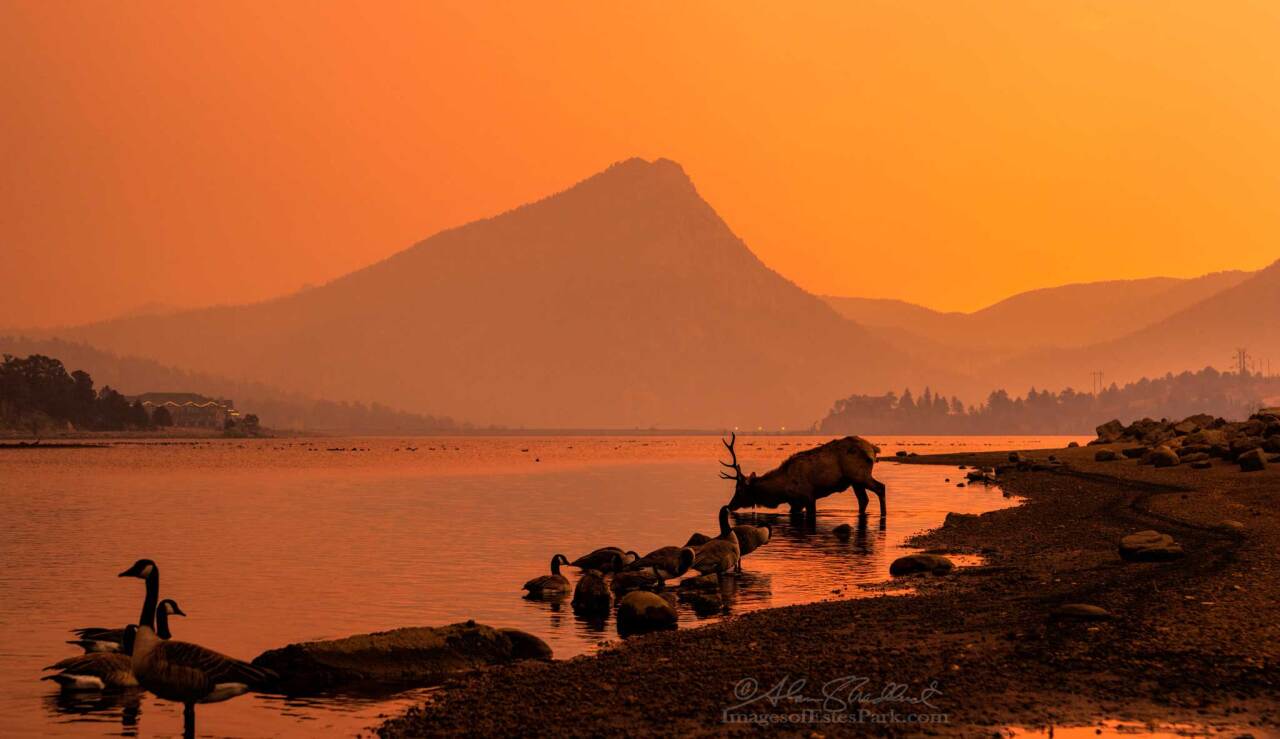GRAND LAKE, Colo. — Even as they drove the familiar, now partially scorched, neighborhood to their Grand Lake home, they held hope close. The cruel question of “what if?” haunted what they already knew.
But it was easier to hope, however baseless, than face reality.
The road snaked left and right and Donnie Kern Jr. and his wife, Jodie, passed by dozens of homes, some completely consumed by the East Troublesome Fire and some that had survived unscathed. The pattern repeated itself block by block: Piles of ashes and twisted metal at the end of one driveway and a home completely intact next door.
“’Well, there's a burned-out section and then you can't even tell that there was a fire,’” Jodie says she remembered thinking. “So, part of your mind is like, ‘Well, no, maybe not me. Maybe it didn't actually happen, and they were wrong or…’”
She trails off, closing her eyes and shaking her head.
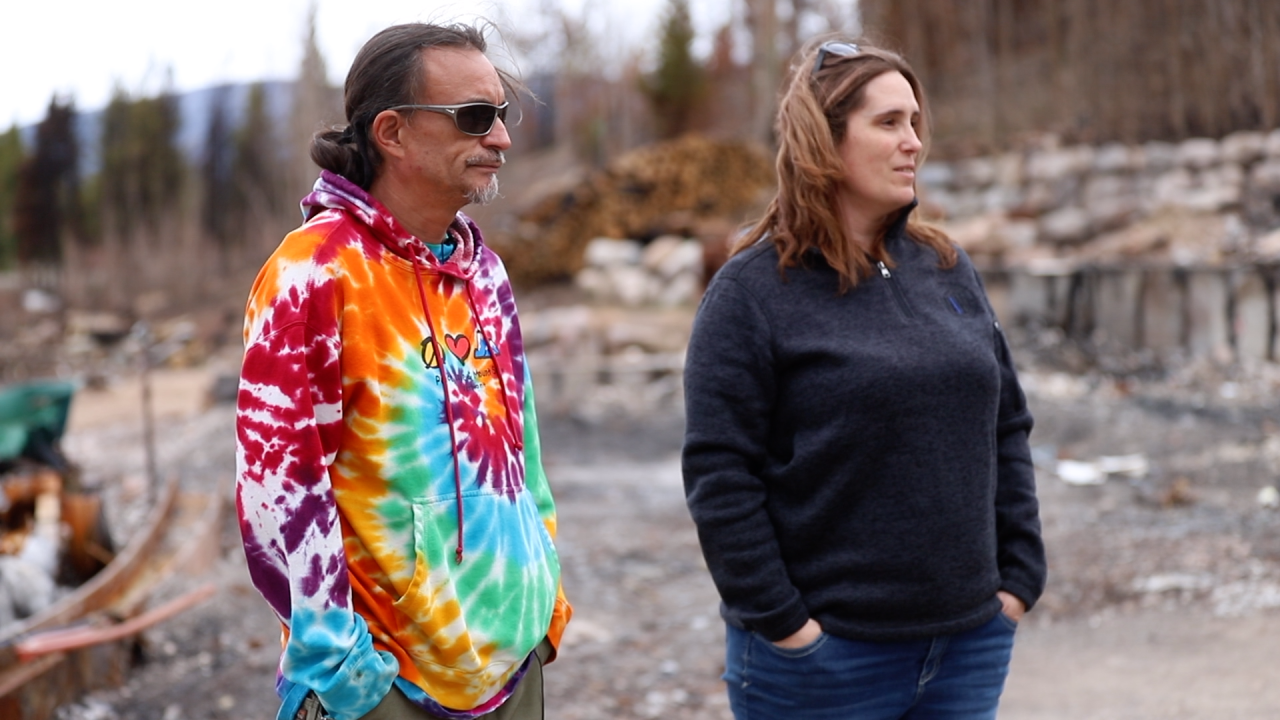
It was May 2021, and more than half a year had passed since the state’s second-largest wildfire on record rushed into the neighborhood. But for many residents, it’s still fresh in their minds, as real, raw, and lingering as the smell of smoke in the county’s woodlands.
READ MORE: Burn scars: A historic fire and a Colorado mountain community in healing
The rebuilding process has begun, tourists are making their way back to the mountain community, and healing has started for many. But it’s slow and painful, and few, if any, of the emotional wounds have fully closed up.
Returning home was just the start.
“Your brain just tells you all kinds of things to be like, this awful thing didn't happen,” Jodie remembers from the day they returned to their unrecognizable home. “And then to drive up in the driveway and just see it. Your brain just stops. I can't believe that this actually happened.”
Historic growth of East Troublesome
At first, the East Troublesome Fire lived up to its name.
It started on Oct. 14, 2020 in the Arapaho National Forest east of Troublesome Creek and northeast of Kremmling, about 20 miles from Grand Lake.
By Monday, Oct. 19, the fire had grown to just over 13,000 acres since it started five days earlier. A few areas along Highway 125 had been evacuated, and crews were putting lines in on the fire’s northern edge.
The next afternoon, the fire was estimated at 15,500 acres. Its growth forced the evacuation of the area near Drowsy Water Ranch on the southeastern side.
On Wednesday morning, Oct. 21, the fire was just over 19,000 acres, but another day of red flag warnings was in store starting around noon. The National Weather Service said gusting winds and the hot, bone-dry conditions could cause the fire to spread rapidly.
During this steady spread over the first week the fire burned, much of the national and state focus remained on the nearby Cameron Peak Fire, which had grown into the largest Colorado wildfire on record by Oct. 15. It had surpassed the acreage of the Pine Gulch Fire, which was still actively burning near Grand Junction.
Meanwhile, East Troublesome simmered, and on the afternoon of Oct. 21, like an underfed monster, it burst from its cage and chewed through the forest 6,000 acres an hour toward Grand Lake, backed by hurricane-force winds.
In about 36 hours, itgrew from 19,000 acres to 170,000 —a record for rapid-fire expansion in Colorado — and forced the evacuation of more than 35,000 people. It was no longer a troubling disturbance, but a life-threatening disaster.
It moved around the edge of town, just barely missing downtown Grand Lake, grabbing whatever would feed it. Neighborhoods were consumed and spit out as billowing smoke and ash.
The fire eventually peaked at 193,812 acres before it was fully contained in late November. In its wake, it left 580 destroyed structures, 366 of which were residential. It also killed two residents.
Much of Grand County had dutifully kept tabs on the fire as it moved and grew. They were prepared to evacuate, with go-bags packed with necessities, easy-to-grab heirlooms, defensible space set up to protect their homes, and evacuation routes. But the rapid spread that day was unexpected and left many residents with less than 15 minutes to pack up and run.
It was an afternoon and evening that still haunts them.
'Oh my gosh, this is here.'
Kami Gilmour and others living on the northern side of Grand Lake had watched the East Troublesome Fire spread over the prior week from the forest northeast of Kremmling toward Colorado Highway 125, but it had been mostly a faint glow over the ridge to the west.
Around 3 p.m., the fire crossed Highway 125 about 11 miles west of Gilmour’s family’s main home on the northeast side of Sun Valley Lake, just north of town. By 4 p.m., the sheriff’s office had evacuated the area near Trail Mountain, 2 miles closer.
“The winds that day were 80-mile-an-hour gusts and they were blowing so hard,” Gilmour says. “It was terrifying that day because you went outside, and it was like being blown over. And it was so weird for late October.”

“I looked at a topo[graphical] map when the fire was just jumping 125, and I was like — I see two valleys,” Gilmour recalls. “One was going to our other house and one was going to this house. And I was like, ‘Oh no.’”
By 7:30 p.m., people living along U.S. Highway 34 on the southern side of Grand Lake were ordered to evacuate, and the Colorado State Patrol started to block northbound traffic to let people flee south.
Gilmour and her husband were at their investment property on the west side of Grand Lake about three miles south of Sun Valley watching the orange glow intensify and grow closer.
“I just had a bad feeling, and it was so eerie that night,” Gilmour says. “…It was about 80, 85 degrees that night. I stepped out at 8 p.m. on our back deck and thought, ‘With the air temperature this hot, I’m on the other side of a fire that’s heading this way.’”
At 8 p.m., the sheriff’s office ordered a mandatory evacuation for Area H, north of Highway 40 and Highway 34. Winds had intensified beyond the 40-50 mph they had blown through the afternoon. By 8:45 p.m., both lanes of Highway 34 were handed over fully to southbound traffic for evacuees.
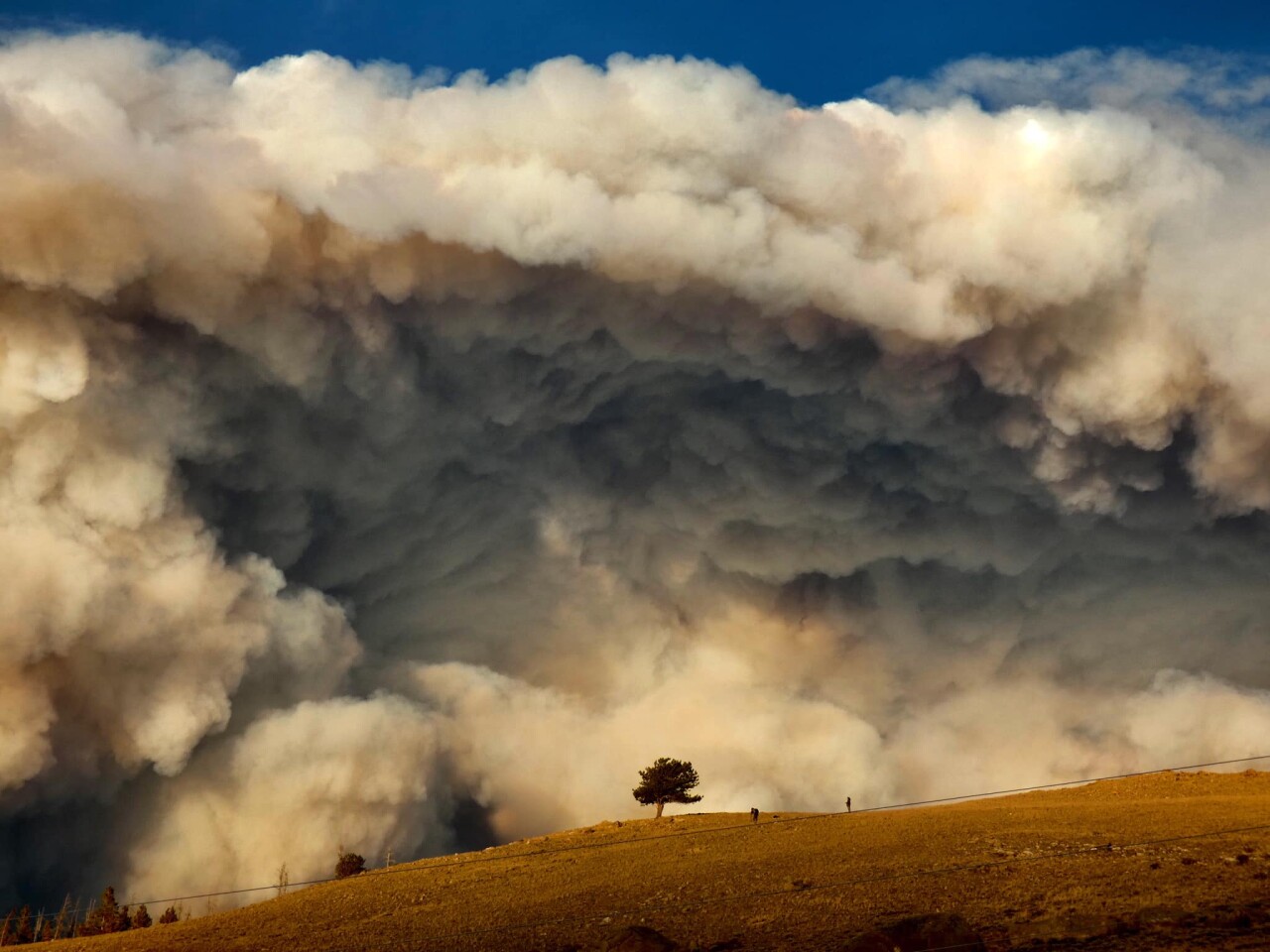
A friend of Gilmour’s who plows their properties and lives on Grand County Highway 4 — about halfway between Highway 125 and Grand Lake — called them.
“He goes, ‘Get out, get out. It’s here,’” she says. “And I was like, ‘What do you mean?’ I said, ‘Is it coming?’”
“He goes, ‘No, it’s here. My garage is on fire.’ … He’s like, ‘You guys got to get out.’”
With two homes in the area, Gilmour says she and her husband started executing their typical evacuation plan from their second home farther south, where they were at the time. (The second home survived the fire despite smoke and treefall damage.)
“We ran around the house taking videos and inventory of every single drawer, because I was like, ‘Obviously, it’s not going to get here in 15 minutes.’”
But by that point, the fire’s intensity was creating a draw in and of itself, which combined with the wind and fuels was leading it to engorge several football fields of land each minute.
“And then we got a call from the county … the alert. And it said ‘pre-evacuation,’” Gilmour says.
“And then, 11 minutes later, they said, ‘Mandatory evacuation. Drop everything and run.’”
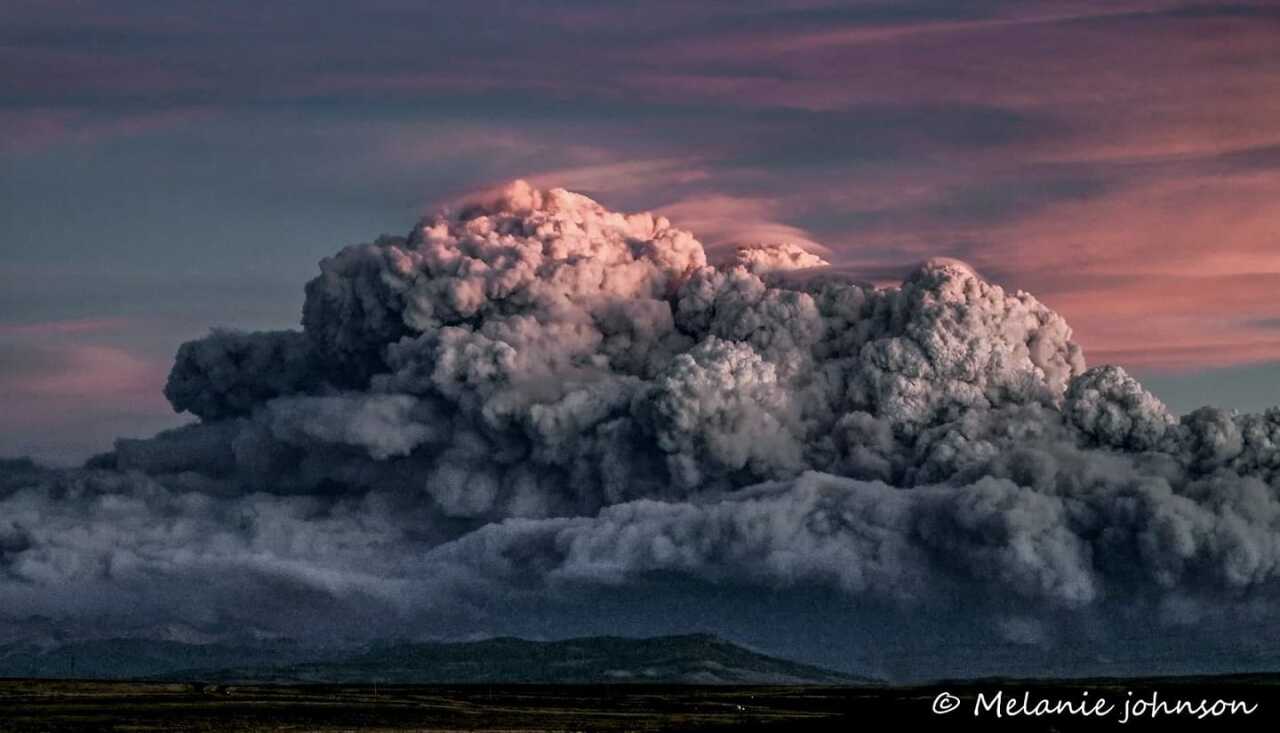
The Gilmours ran to the Sun Valley Lake house — lined with tall evergreens, willows and an abundant moose population, the place that helped raise their family and many others — to do what many Grand Lake residents did that night before reality set in.
“You know, there’s this thing like, ‘I’m gonna — I need to protect my property,’” she says. “Like, we had all our fire extinguishers ready, our hose.”
What she and her husband did not know at the time — the thick, black smoke made it nearly impossible to see in the twilight — was that homes were already burning just across the lake and on the tree-covered hills above.
“I stepped out on the back porch,” Gilmour says, “and the temperature was now like 80 degrees; the wind was over 80 mph. Chunks of burning ash were falling and the sound that was coming from this way was like a freight train.”
“And I thought, ‘Oh my gosh. This is here.’”
‘There was no hope for the house’
Days before the chaotic run on Oct. 21, Donnie and Jodie were at home, keeping an eye on East Troublesome’s movements, but concern hadn’t truly bubbled up yet.

They were familiar with wildfire: Donnie is a retired firefighter and Jodie works with 911 dispatch in Grand County. They understood it was part of Colorado life.
The couple came to the town in 1995 after their wedding to work at a family restaurant and bought a home on the southeast side of Columbine Lake. When Donnie’s parents decided to move out in 2001, they worked out a situation where Donnie and Jodie could buy that home, giving them more space with their baby on the way.
Their new home was a two-story house on Mustang Street, tucked down a short dirt road between the Colorado River and Columbine Lake — an ideal place for a vacation, and even more so to call home.
A garden ran alongside the driveway, complete with a small pond surrounded by flowers. A dog run allowed their big dogs to go in and out without worry of moose or bears. In the backyard, a 19-foot tie-dye teepee — swirled with colors that often matched the sunset — was set up on a pad next to a fire pit. A deck overlooked the Never Summer Wilderness. A small and beloved slice of Colorado heaven.

On the afternoon of Oct. 21, the fire was still west of Highway 125. The usual 5 p.m. fire briefing outlined more evacuations for Grand Lake proper andwarnings of strong winds and heavy smoke. Donnie says their neighborhood, a few minutes outside of town limits, wasn’t even on pre-evacuation notice yet.
The couple drove down a local road to look at the sky and take pictures.
“The clouds and the wind were so terribly beautiful,” Jodie says.
Back at home, they ate dinner — Jodie had ribs cooking in the oven all day — with their son and grew increasingly uneasy as the sky darkened. It was far too early in the year for the sun to set.
“We went out to the corner of the deck, which was here, on the back of the house,” Jodie says. “And you could hear the fire.”
“Roaring up the valley,” Donnie says.
By 5:45 p.m. the fire was still 10 to 15 miles from them, but they had received a voluntary evacuation notice viathe county’s CodeRED system.
Then, a warning, this time from Mother Nature: Ash started falling on their deck. After their son left, the Kerns decided to prepare their cars.
“We started loading some things in the car thinking, ‘Eh, we probably better plan on heading out.’ And I came out,” Jodie says. “And there was this glow, like all of the buildings on the ranch, which is right over there, like they turned on all of their lights and they were all just red.”
The dark sky had lightened some, but not in a promising way. Everything glowed orange.
By the time they went downstairs and opened the garage to get a better look, their yard was on fire.
The neighborhood looked like another world. The fire was suddenly dangerously close, spewing ash and embers ahead of it and roasting the air to 110 to 115 degrees, Donnie guesses. The wind — likely between 60 to 80 mph, he says, but with reports of up to 120 mph — urged the fire forward.
“It happened so fast,” Jodie says. “And so that was when we grabbed the dogs, like whatever we have is what we're leaving with because we were leaving now. Right now.”
They clutched their pre-packed overnight bags, as many scrapbooks as they could and a few pictures off the wall and ran out the door. Even as they pushed the items into the car, as the fire consumed the yard a few feet from the home, Donnie says he dared to hope they’d be back.
Just before they left, he remembered his wedding ring, sitting on the counter.
“So, I ran in, grabbed my wedding ring, and I came back out,” he says. “My dog was already in the car. Came back out and I saw the fire front come flying in and slam up against the house.”
As Donnie and Jodie drove away in separate cars 40 mph down the road, they hoped for damage instead of destruction. But it was impossible to ignore the reality before them. They could barely see past the hood of the cars. The fire had arrived in full force.
“We knew there was no hope for the house when we left,” Jodie says.

'You need to run now'
By 9:30 p.m., the situation was “not looking good” in Grand Lake, as Town Manager John Cronetold the Ski-Hi News that evening.
“We just have to hope and pray that everyone makes it out of this OK,” he told the paper. “Remember: possessions are possessions. People are going to need help after this, but lives are more important.”
The west side of Rocky Mountain National Park had been closed earlier in the day, and residents were using Trail Ridge Road/Highway 34, which connects Grand Lake to Estes Park through the park, to evacuate southbound in both lanes toward Granby, with everywhere along Highway 34 north of the crossroads town under mandatory evacuation orders.
Kami Gilmour and her husband, and others in Sun Valley, were in their moment of panic.
“I’ve always seen those videos of people fleeing the California wildfires, where it’s just like on both sides. And I have a very irrational — probably not so irrational anymore — but horrendous fear of fire,” she says. “And I was like, we gotta get out.”

With just a small pickup truck and only minutes to pack what they could and leave, Gilmour impulsively grabbed items around her, filling her arms with things she never expected she’d save in a fire.
“I was grabbing, like, my grandmother’s apron, dish towels that we had that meant a lot to us … different pictures on the wall. Things that people had painted of the house and stuff — just tried to grab it and throw it in,” she recalls. She had a mug with her, but there wasn’t room in the truck or time left to pack anything else. She set it on the counter, and they left back toward the highway.
There is only one way in and one way out of Sun Valley.
“This is a deathtrap. We also all knew that as neighbors. We don’t expect the firefighters to come in here and risk their lives,” she says. “…With one way out — and that way was already on fire — the sheriff and the firefighters came into this neighborhood just pounding on doors when they saw cars, screaming to get out.”
A family who lives nearby was enjoying a typical night at their cabin when the fire was on the neighborhood’s doorstep and when first responders tore through it in a last-ditch attempt to get people evacuated. They banged on the family’s door.
“And [the first responders] said, ‘You need to run now.’ And they were like, ‘Oh, we need to clean up our dinner and turn off the stove,’” Gilmour says.
“And they’re like, ‘No, you don’t. You’re already done. You just need to get out.’”
Other neighbors helped the older residents pack up in a hurry to evacuate, with cinders raining down on them and trees starting to fall. One couple living a half-mile down the road tried to ride the fire out in a bunker at their home; they were the only two human casualties of the East Troublesome Fire.
Twenty minutes after the Gilmours left, trees had started to litter the road out. Gilmour’s neighbors had to use one vehicle to bump the one in front of it over the fallen timber. Just 20 minutes after that, when the family cleaning up their dinner was finally evacuated, Gilmour says all of the houses at the lake were on fire and the road was nearly impassable.
“Everything was fully engulfed, and they had to pick up burning trees. They, with their kids, with the adults and the sheriff and the first responders, had to lift burning trees out of their way in order to get them out of the neighborhood.”
Gilmour and her husband made it out of the neighborhood and to the junction with Highway 34.
At Highway 34, a right turn would have taken the Gilmours south, back through Grand Lake in the southbound traffic toward the evacuation center at Granby Ranch, or beyond toward Winter Park and Berthoud Pass, where other evacuees had continued on.
A left turn would take them up Trail Ridge Road into Rocky Mountain National Park, where the fire would soon be roaring through meadows and up steep slopes and stands of evergreens and aspen.
They turned left and headed north.

“We went left. We’re like, ‘We’re not driving into the fire; we’re gonna flee,’” she says. “Well, we fled in the direction of the wind. Stupid. There’s a reason they tell you which way to go.”
Gilmour describes the drive north into the park like something from a film — or like a Colorado blizzard mixed with a blackout dust storm.
“We were driving by, 80 mph, through Rocky Mountain National Park, not even realizing the animals are fleeing in the same direction and crossing roads. Trees are starting to fall because the winds are so strong,” she recalls.

“We were the only car on the road.”
Gilmour says she saw fire tornadoes engulfing the landscape as they drove north.
“It was almost like a hurricane and a tornado and a wildfire met in the woods,” she describes. “I know that this actually created its own weather phenomenon. It changed the temperature of the air and there were weather scientists and stuff in Germany going, ‘What in the world is happening right here?’”
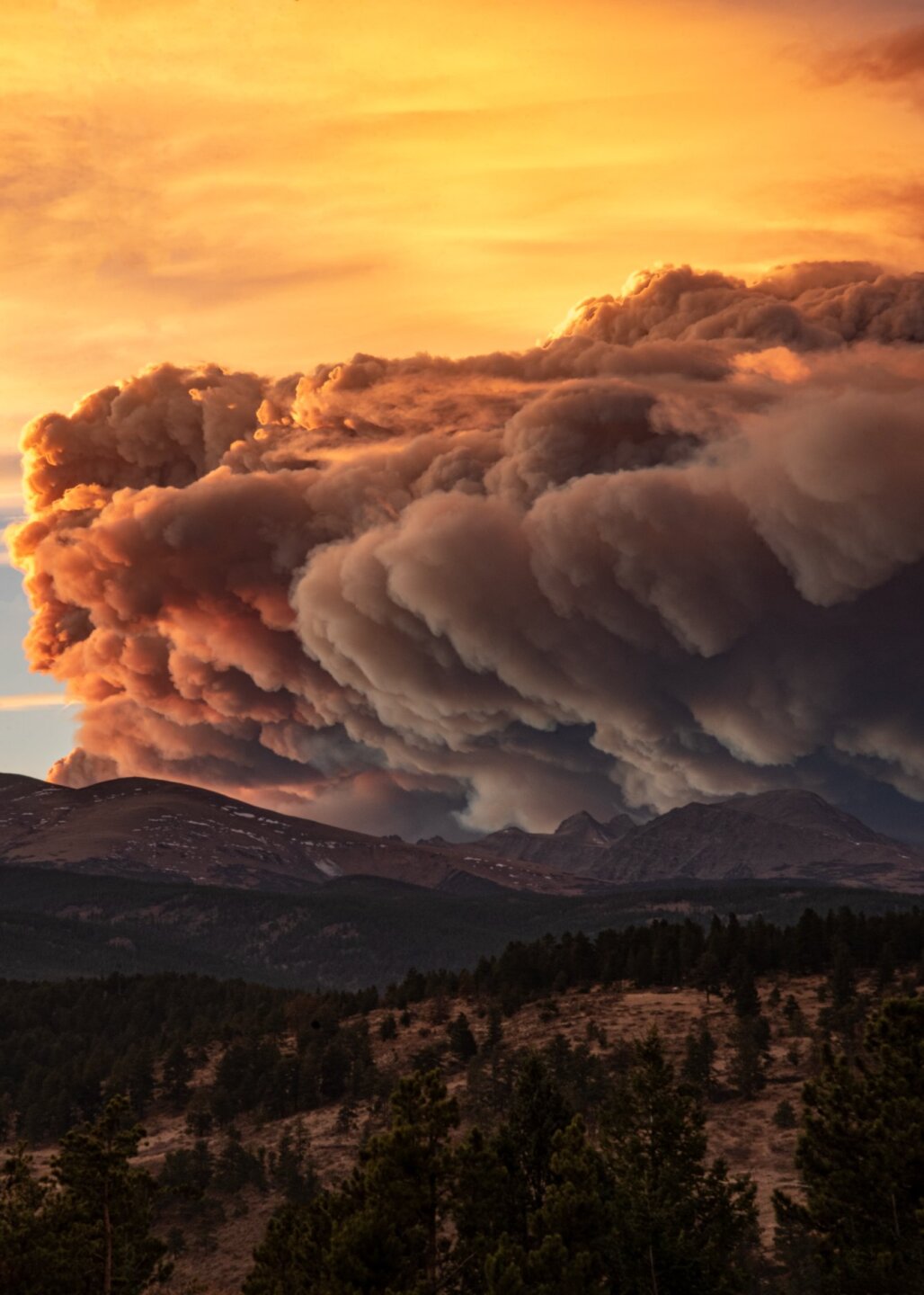
Grand County officials confirmed by 10 p.m. that homes had been lost in the Grand Lake area and that the town was under threat of burning as well. As the Gilmours headed north toward the visitor’s center, the only vehicles they saw were firefighting crews coming from the other wind-ravaged fire burning east of Estes Park, the Cameron Peak Fire, to help with the East Troublesome.
Gilmour says it did not dawn on her until later that night — when she spoke with others who had fled north into the park and saw the conditions of their smashed-up vehicles — and until they returned, how lucky they had been on their harrowing escape.
“We could have been seconds away from running off the road, or hitting an animal, or having a tree fall on us when we were fleeing. And that fire was about 30 minutes on our tail,” she says.
“And there would have been no help. If we would have rolled off the side of Trail Ridge [Road], or hit an animal and been stranded, we would have been dead.”
In the wake of the breakneck evacuations and nearly unprecedented fire behavior that night — some say the fire burned 1,700 yards a minute at times and generated hurricane-force winds — all officials and residents of Grand County and Grand Lake could do until daybreak was wait and see. And hope for the best.
'The worst of the worst of the worst'
“We planned for the worst,” Grand County Sheriff Brett Schroetlin said early the next morning. “This is the worst of the worst of the worst.”
The fire had exploded from 19,086 acres on Wednesday to more than 125,000 acres Thursday morning. At that point, Schroetlin and other emergency and fire officials could only say there were “lots” of homes that had been lost.
Another red flag warning was in effect for the day until 6 p.m., and pre-evacuation notices were ordered from Hot Sulphur Springs, down to Granby, and up to the eastern side of Estes Park after the fire burned 18 miles into Rocky Mountain National Park and jumped the Continental Divide.
On the eastern side of the Divide, Estes Park was awash in an eerie orange glow all day as the fire crept down through the park toward town. By 6 p.m., the East Troublesome Fire was officially the second-largest wildfire in Colorado’s recorded history — just behind the nearby Cameron Peak Fire — having burned what was at that point an estimated 170,000 acres, including around 50,000 that day as it continued its run to the northeast.
"I have a message," Schroetlin saidin a Facebook video just after midnight on the 22nd. "I'm not even sure what those words are. Today has been an extremely, extremely challenging day for our community. We knew this fire was here. We knew the impacts of it. We looked at every possible potential for this fire. We never, ever expected 6,000 acres per hour to come upon our community."
But there was still untold ruin lying in the fire’s wake on the western side of the Divide even as a cold front moved in, as well as homeowners and fire and emergency officials still awaiting conditions safe enough to survey the loss.
“I understand everyone wants to know. It’s hard; it’s terrifying; but we have to allow these firefighters to get in there. There is so much smoke and active fire in there right now, I can’t put my deputies in there,” Schroetlin said in his message to the community. “My biggest fear is to tell someone their house isn’t there when their house really is.”
But the officials also previewed what would be ahead for the Grand County community and their recovery.
"As we drive around this northern part of Grand County, I don't know what we'll see in the morning, to be honest," he added. "But you know what? Together, as a community, we're going to get through this."
“We are Grand. We are going to heal from this,” said Grand County Commissioner Kristen Manguso. “We’re going to help people heal from this.”
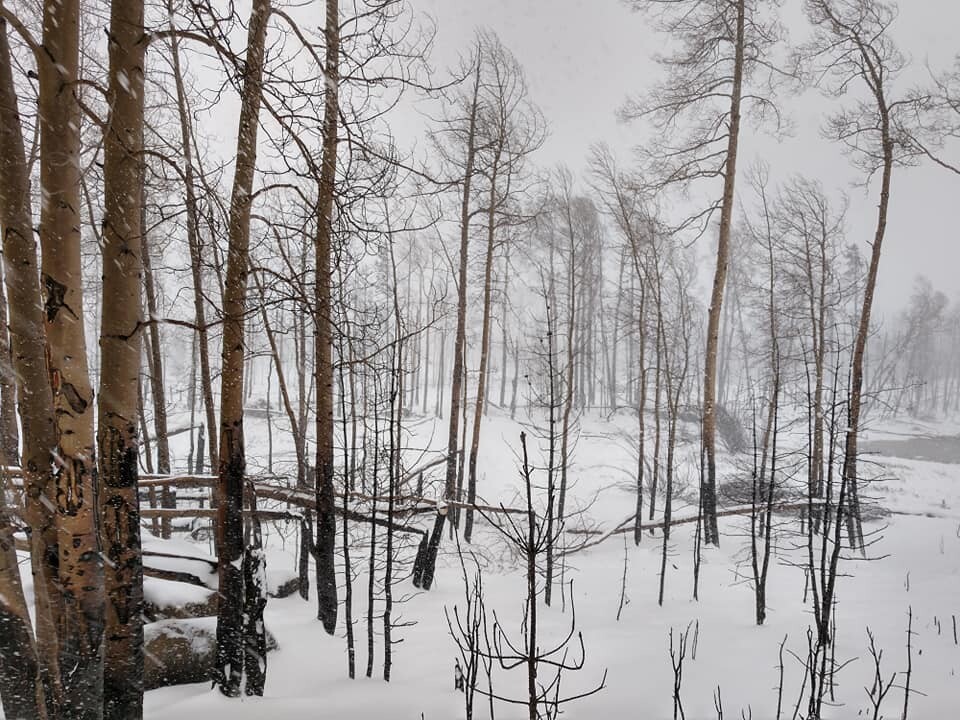
The fire grew another 20,000 acres or so in size over the next few days amid more red-flag conditions on Friday and Saturday, Oct. 23 and 24. But a snowstorm — much more typical for the Grand Lake area in late October than a ravaging wildfire — moved in early on Sunday, Oct. 25, bringing 6-12 inches of snow to the fire and halting its growth, sparing downtown Grand Lake, and leading to some pre-evacuation notices being lifted in towns like Granby.
That Monday morning, Oct. 26, the fire was mapped at 192,560 acres and was 15% contained. That weekend would turn out to be the final days of major growth by the fire, which would be declared 100% contained at 193,812 acres, but not until more than a month later, on Nov. 30, 2020.
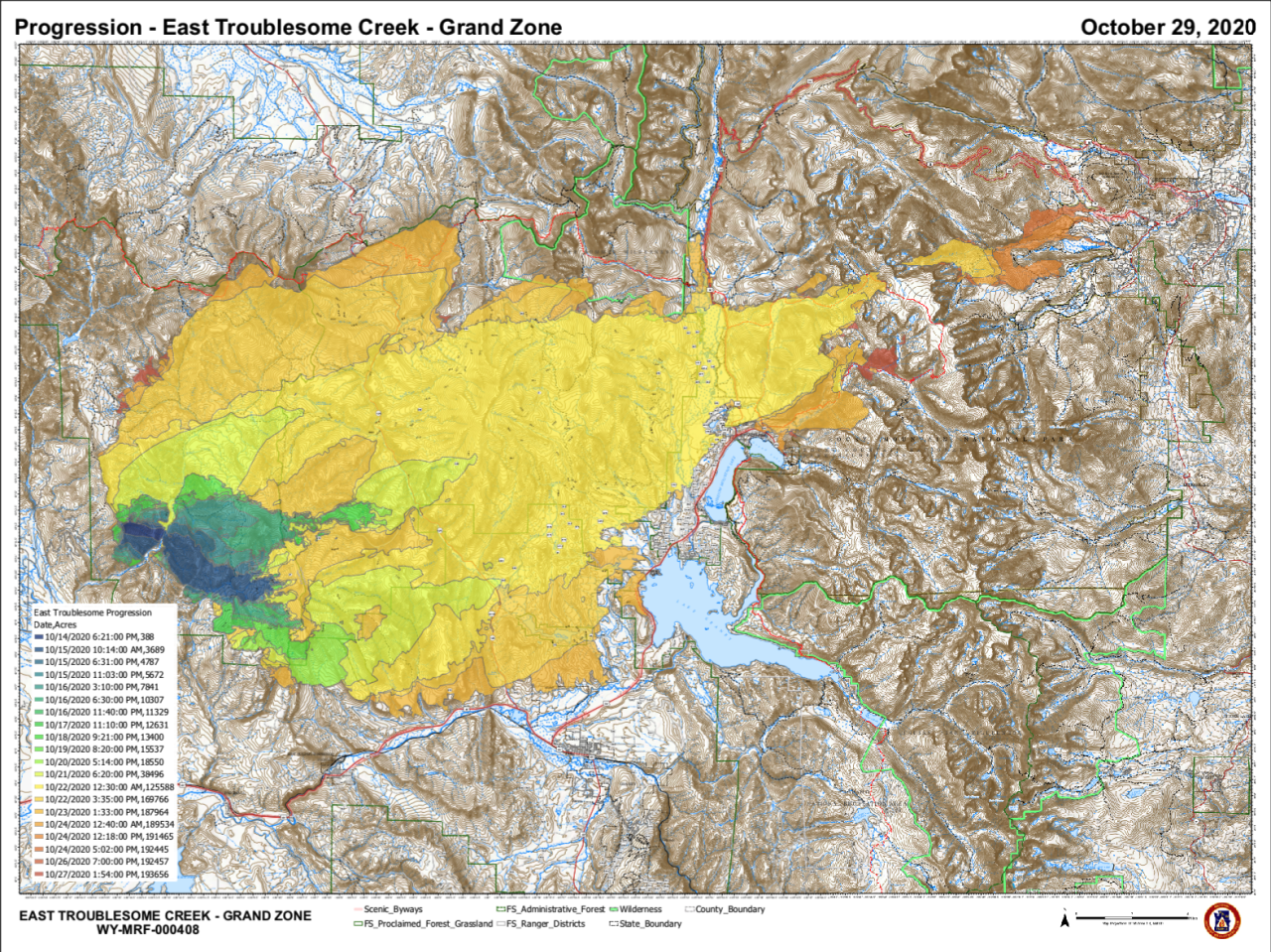
For those living in and around Grand Lake and other areas that burned, the first few days after the fire stormed through were filled with anxiety and rumors. Most of the people allowed in evacuation zones were firefighters and first responders, though some residents had either stayed behind or gotten back in, according to those who live here.
Since Grand Lake is such a small and tight-knit community— especially among those who live here year-round or most of the year — word traveled fast about whose homes were spared and who would have nothing to come back to.
The county set up a hotline for people to call as officials worked to put together a database to notify people about evacuation updates and their property’s status.

Schroetlin, the sheriff, pleaded the next morning with people not to share false rumors or take pictures of other people’s properties and said crews were still trying to get into the damaged areas. Family members of Lyle and Marylin Hileman said later that day the two had perished in the fire inside their longtime, storybook home.
Into the weekend, Schroetlin maintained he was not prepared to release any preliminary numbers or information on the number of homes that had burned. But many of the locals already knew, having found out from others who had stayed behind or some of the crews working on the fire, shutting off pipes because of the cold weather that followed, and starting the cleanup, some of whom had lost homes themselves.
The return to Sun Valley and a collective loss
Before any residents were allowed back home, American bald eagles circled the empty Sun Valley Lake area, feasting on the carcasses of animals that littered the landscape and once-pristine lake, where many of the fish died.
A community that was once brimming with activity, peacefulness and lush vegetation was now empty, quiet and gray. Smoke still hung in the air.


Gilmour’s family was gone for three “frustrating” weeks — they were among the last residents allowed back — because of underground propane tanks that remained on fire, broken trees and power lines everywhere. The heat of the fire caused tree roots to smolder underground until Christmas in some places.
Despite knowing the house was gone and being able to prepare for that rush of emotions, Gilmour says the reality was unimaginable.
“I prepared myself for probably one of the worst — you know, what was it going to look like?” she says. “I didn’t realize the house would literally be nothing. Just vaporized, basically.”
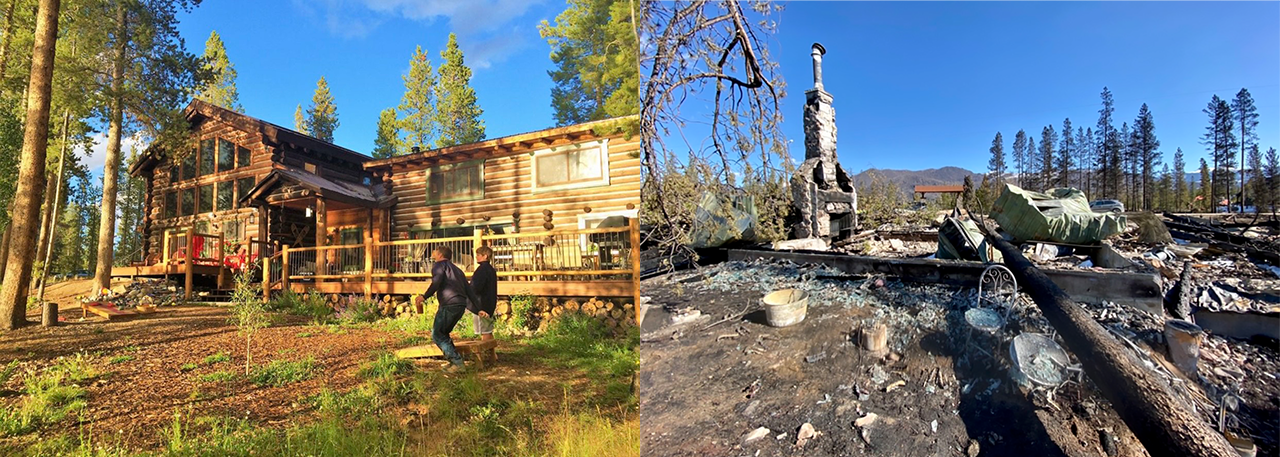
The 50-plus-year-old log home was little but a chimney, rubble and ashes — not even the foundation remained. The metal roof was “rolled up like a cheap piece of aluminum,” Gilmour says.
The cherished family tetherball next to the firepit out back — “I’m thinking, ‘It’s probably just a mangled mess. I mean, surely, it’s…’ — It’s not even scorched. The ball didn’t burn,” Gilmour says — remains intact despite cast-iron skillets being totally warped and glass windows melted.
The fire didn’t only burn houses and structures — the common vernacular for firefighting officials — it burned people’s homes, memories and decades of their lives. For many in the Grand Lake area seven months later, the struggle continues to try to reshape lives that went up in a flash.
“The first day we were up here, it was kind of fascinating just to kind of go through and try to salvage things. And then, every day we came here, it seemed to get worse,” Gilmour says. “It made you physically ill. I mean, the smell — the burned smell that was just everywhere.”
As the family worked to get a grasp on the rubble that had once been home, Gilmour tried to figure out where the kitchen was based on a burned-out stove they found.

Under a piece of roof was that same mug she had set on the table just before they had left their home for what, despite her not knowing or believing it at the time, would be the last time. The mug has ash kilned on the side.
“It’s sitting on my windowsill at home. And it leaks a little bit, but I use it. And it’s kind of one of those — it survived,” she says.
While there was plenty of sorrow in coming back for people who lost their homes, the neighborhood also celebrated those whose homes were spared, Gilmour says. She remembers hugging people she’d never met “like they were long-lost friends.”
She says those people’s homes who did not burn have survivor’s guilt and grief about the fire, but she describes the community like a snowshoe — a collective mesh that keeps them from falling down into a hole.
READ MORE: Burn scars: A historic fire and a Colorado mountain community in healing
“You literally drive around and just get out of your car and go run up to neighbors and hug them and share space with them, you know?” she says. “I mean, there was just so much collective loss, and it was so sad. But it was beautiful because it was shared.”
As the family sorted through the rubble in the days after being allowed back to their property and the weeks and months that have followed, the good days come with the bad, Gilmour says.

“It became that I can’t come up here one more second and look at this rubble. It almost gave you a panic attack, an anxiety attack,” she says. “It was like, I just need it cleared. It’s a step in the healing to get it cleared. And the neighborhood cleared really fast.”
Seven months after the fire, the one-acre lot where the Gilmours’ 3,800-square-foot, six-bedroom home once sat is now a razed, mostly flat plot of dirt with some slash piles and a dumpster sitting on its edge, and a 1999 pop-up camper the only lodging available. The lake has regained some of its clarity, but the scorched landscape offers a much different view than it used to.

Gilmour can still picture the exact layout of the home, with its sprawling deck out back, the fire pit closer to the shoreline, willows next to the lake that were once “Moose Central” and an unmatched view to the west, as she walks across the barren property.
Rocks painted over the years by her family and visitors — “Grand Lake 2014,” reads one sitting in the dirt near what was once the southwest side of the house — are among quaint reminders of the decades of history that were lost so quickly.
While walking on the road in front of what used to be the family home, she comes to a dead stop before screaming and running off to a ditch across the way. She’s spotted one of the cushions from Adirondack chairs that had sat on her back porch for years — its blue-and-white pattern only slightly singed in places. Crying, she presses it to her face.
“It’s intact and it’s soft,” she says. “A lot of times, we find glass and metal, like tiles. Stupid outdoor hooks and stuff. But I haven’t had anything soft.”
“You just gotta consider them treasures, you know? I think that’s what we have to do. They’re gifts, you know?” she goes on. “Even though it looks really bad, it’s hard to let go of what was.”
“Damn tetherball and couch cushion that made it,” she laughs and sobs at the same time.

Amid healing process, rebuilding plans begin to form for Kerns
In Grand County, where more than 200 primary homes were destroyed, Donnie and Jodie Kern are eager for their turn at starting the rebuilding process.

“We're definitely one-day-at-a-time-ing it, and just trying to be patient and know that things aren't really going to go fast,” Jodie says.
Through the winter, they kept their minds busy by outlining plans. The winter holidays passed in a “daze,” Jodie says, but in April they started working alongside professionals to get a home back on the lot.
She says it’s only within that time that she found herself looking forward instead of backward.
To help begin the process, she created a poster of a hand-drawn metaphorical journey up a mountain — base camp being the current situation and the summit as an “epic housewarming party!” at their new home — with steps, labeled as camps, along the way.
They are now working with an architect and an engineer to get a blueprint finalized and permits approved. On June 7, crews pulled out their old burned foundation.

“We're not going to put the same house in the same spot,” Donnie says. “Change it up and make it a little different, but it'll still be home.”

Jodie says they hope to move in by November.
“It won't be done completely on the inside but will give us something to do over the winter,” Donnie says. “So, get the shell of it done and get running water in a toilet and be able to cook in the kitchen.”
In the meantime, two neighbors with rental homes cleared part of their rental schedule so Donnie and Jodie could rent the homes to watch the construction progress on their nearby property. Donnie says he and Jodie are the only year-round residents on the street, and feel lucky they found rental properties available.
“Both those homes are VRBO and they blocked out the time for us to be able to accommodate us,” Donnie says. “So, we can't say thanks enough for our two neighbors.”
The couple affirmed that the small town will come back stronger, and just as beautiful as before, though the scars — physically on the landscape and mentally for the residents — will linger for years to come.
Jodie says she is now inspired to do more in the community, even as they work around the clock to build their new home.

“When the dust has kind of settled, I do want to get more involved and pay that back, you know — what was given to us,” she says. “And find a way to be more involved, be part of the regrowth from here.”
The sentiment is echoed around town, as neighbors help neighbors clean properties, tidy up the burned cemetery, and support small business owners who don’t have their home to return to at the end of the day.
“When the rubber hit the road, Grand Lake stepped up and showed what this town is made of,” Jodie says.
Donnie nods.
“What a true community is all about,” he says.



'Beauty rising from the ashes' around Grand Lake
Six hours after she found out her home in Sun Valley had burned to the ground, Gilmour was already at a flea market to start the process of replacing all that had been lost. She was in line with a few antiques and other things — replacements for the tchotchkes she had collected over the years — and a little weepy, she admits.
“I said I’m collecting these because we just lost all the stuff in the fire — and everyone in line paid,” she says, through tears. “Everyone picked something to pay for and buy.”
Gilmour says she’s been slowly collecting things to go in what will eventually be the new house, but it will take time.
“It took 15 years kind of just gathering things, and I want to slowly collect things to — I want it to look a lot the same.”

Their home had been a 50-year-old log cabin with creaky floors, the smell of old wood permeating every room, quilts draped on the furniture, and cabinets her kids insisted painting red. There will be nothing fancy, no home packed with electronics, when the Gilmours rebuild.
“We live in Grand Lake. I don’t want a smart home; I want a log cabin. I want it to be somewhere where we can sit and plop that feels like a cabin that represents sort of the character of our town,” she says.
The red cabinets will be back, Gilmour says, “absolutely a must.” She has been collecting more secondhand comforters and quilts to refurnish the house and has already found the exact model of lamp that burned in the fire. The kids have decided they should frame photos of the old home to redecorate what will be the new one: “So, kind of paying tribute to the old view in a new view. And I like that idea,” Gilmour says.
But the views won’t look the same for decades. The fire scorched nearly all of the trees on the other side of the lake and most of the vegetation surrounding it. The lake sits mostly barren for the time being. The homes that did survive, once hidden by trees, now sit in plain sight scattered across the shoreline.

The people living in the neighborhood, as well as the county, worry that the mountain across the lake from Gilmour’s place could all come sliding down, wiping out the home a man built shortly before the fire to house his business supporting outdoor activities for veterans with post-traumatic stress disorder.
“It was hard enough feeling like the fire’s gonna come and we’re gonna lose our house,” Gilmour says. “He has to sit here every day going, ‘My house survived, and I don’t know every rainstorm if it’s going to survive.’”
Still, they have hope. In mid-May, two-inch shoots of grass had started to spring up across the charred landscape — jarring bolts of green bursting through the shades of yellow, brown, orange and black. A few ducks have returned to the lake. Some of the moose that called the area home have been spotted in the past two months. Sun Valley neighbors bought “tons and tons and tons” of native seeds earlier this spring, and they climbed the mountain across the way, scattering grass and flower seeds all over with the hopes the fire did not burn too deep into the soil, Gilmour says.
“So, we’ve all been watching and waiting,” Gilmour says. “...Seeing that moose and her baby come back the weekend that we were trying to reseed again was just a note that life is going to go on, you know, we just need to be patient.”


If patience is a virtue, those in the Grand Lake area might be saints.
“There’s several parts of this,” Gilmour says. “There’s the fear of a wildfire coming. There’s the absolute terror of realizing it’s here. And then there’s the fleeing for your life. There’s the cleanup and devastation. And then there’s the insurance process.”
Those who lost their homes or had property damaged by the fire have spent many hours the past few months dealing with insurance companies as they decide whether to rebuild or move on from their land. Some had no insurance at all. But many in the Grand Lake area were insured, though it seems to depend on who they were insured by as to whether or not the recoupment and rebuilding process has even gotten started seven months after the fire.
Gilmour sits in the latter bucket. She calls the insurance policy that the family had on the Sun Valley home “really robust” but also “a total bust.”
“Most of us are paying out of pocket and still waiting,” she says. “Our insurance company has stopped talking to us; we can’t even get them to respond.”
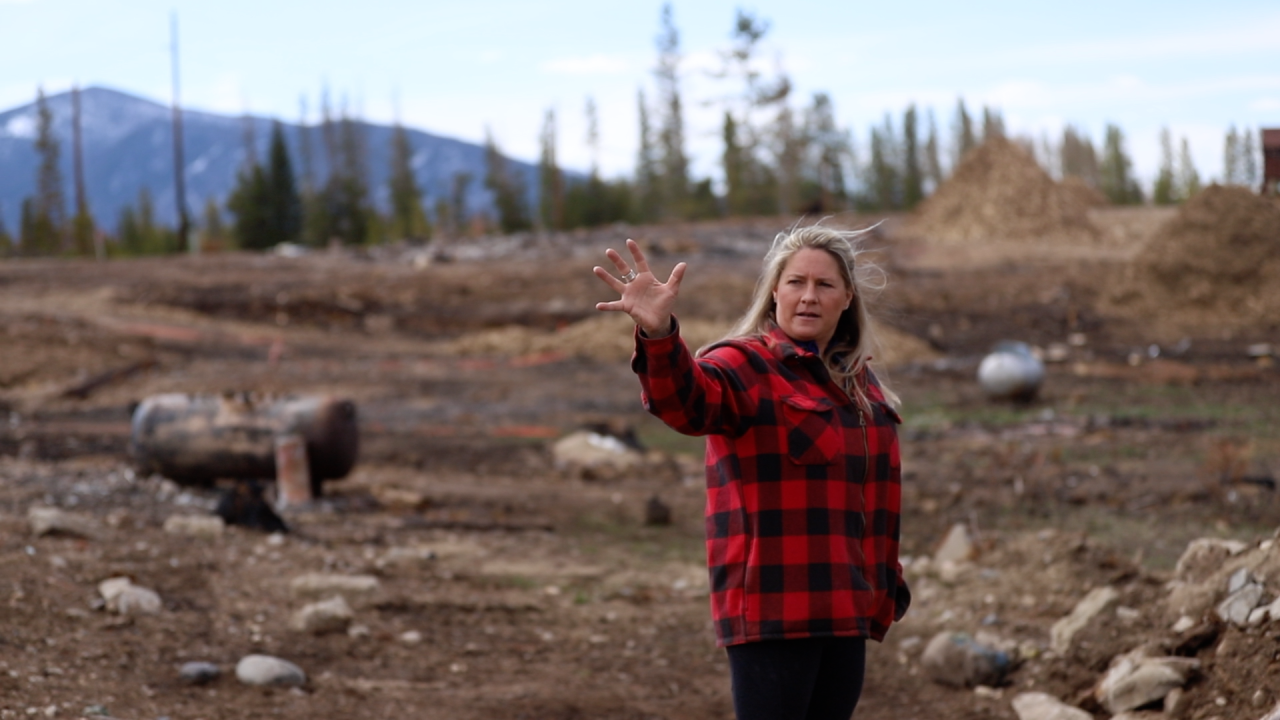
Gilmour believes that the scale of the loss and damage from the fire in such a concentrated area, combined with soaring lumber prices in Grand County and across the country, and a lack of skilled workers to do the construction, has led insurers to throw their hands up and resulted in the lag of the rebuilding process.
So, in the meantime, she and her husband are starting their rebuild with their own money, with hopes they will be able to recoup some of the insurance claim to help pay off the mortgage on the old home and to build the new home. Gilmour met with the builder they chose in early May.
“I think we finally have turned a corner and stopped worrying about the insurance company and are just saying, ‘We’re gonna rebuild and we’re gonna figure it out,’” she says. “…I’ve explained to the insurance company with extreme details what it was like, because, you know, you’re treated just like a number. They don’t understand. At least no one’s been treated like we lost a lot.”
But she acknowledges it will take years to be back in a fully constructed and furnished home. They want to scale down, shrink the footprint, and give the neighbors some more breathing room: “We don’t want it grand or fancy, we just want it to be magical like it was.”
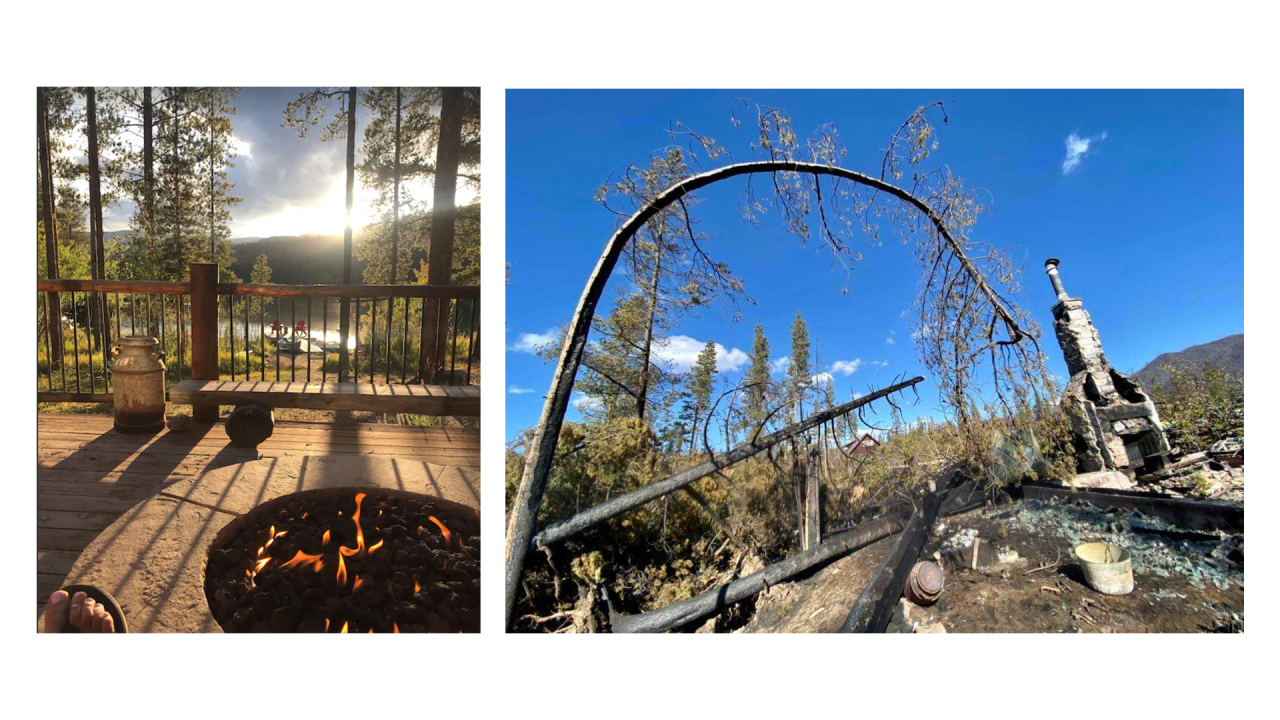
“We want to use our hands. We want to know who’s building our house. We knew the people that built the house before, 50 years ago, and we were really honored to be in a home that was built by people that we respected and admired and knew,” she says. “And we’re happy to be slow and rebuild this, but we want it to be part of the healing process and not a rush.”
Gilmour hopes and believes getting that process underway — digging the new hole for the foundation, pouring the concrete, the delivery of the new logs — will help erase some of the trauma she and her neighbors feel from the night of the fire and the grief from losing all the physical reminders of their memories from Sun Valley.
“There’s something beautiful about beauty rising from ashes, especially when it’s a collective community who has experienced loss. And we are all so resilient and determined, and understanding that it’s not going to be immediate,” she says. “Something about when you live in ugliness and chaos, but you can see through the beauty. It’s going to make it even more beautiful when it’s all said and done, and that’s what we expect.”
Rushing the process will only leave people frustrated, Gilmour says, acknowledging how long it’s going to take before things start to get back to what could even be considered a new normal for Grand Lake. But she believes the “supernatural” event that took place the night of Oct. 21 should make Grand Lake a place like the 9/11 Memorial — somewhere where people can come to see the damage done and hear the stories of those who lost everything and those who miraculously saved what they could.


“The stories of heroics that the first responders and general neighbors did with a tiny crew of probably less than 20 people to try to save this town and save the structures is just nothing short of a miracle,” Gilmour says.
But for the kind and caring community that has leaned on one another so much since October, the hope is to stick together through the days, weeks, months and years to come — to be Grand.
“What’s happened in this neighborhood is nothing short of just a miracle in terms of human resilience and relationship. We’re going to rebuild, and we’re going to do whatever we can to rebuild. But the thing I’m looking most forward to is not the house, but it’s seeing my neighbors. I can’t wait,” Gilmour says, tears again welling in her eyes.
“I had a text from my neighbor the other day,” she laughs, “that said, ‘I just want to sit on our campsite and sit around a healthy campfire — since we’re not gonna burn anything down.’”






